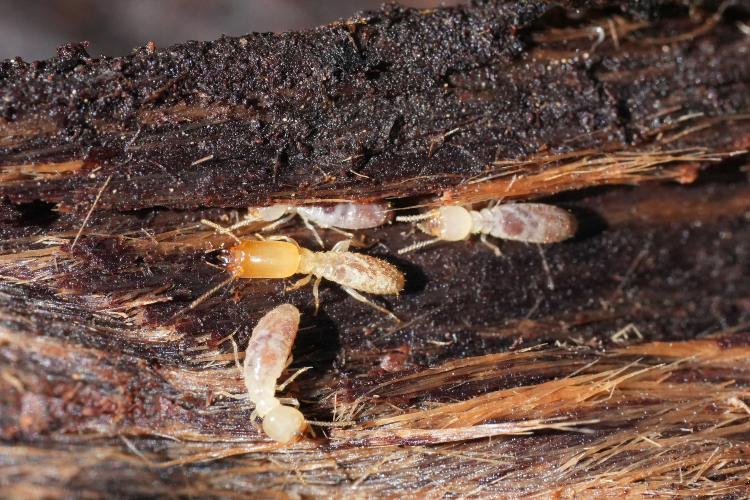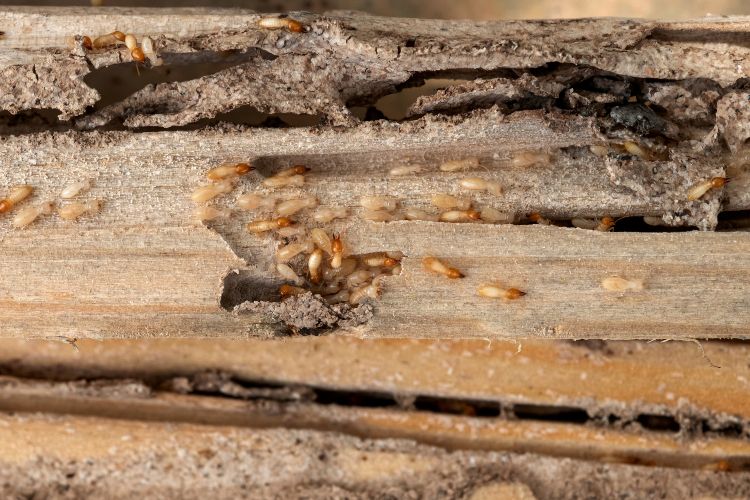Are Subterranean or Drywood Termites Worse?

Subterranean Termites vs Drywood Termites: Which is Worse?
Do you know the difference between subterranean termites and drywood termites? They’re both termite species, but they are very different in many ways. While termites play an essential role in the ecosystem, clearing away dead wood and refuse, they are extremely destructive to homes and businesses. So, between subterranean and drywood termites, which is worse? Neither are great, but you would probably consider whichever species is infesting your home to be the worst! However, there are some facts about each of these termite types that you should know. Just to avoid dodging the question, before we dive into subterranean and drywood termites facts, we will say that subterranean colonies are much larger, and can do significant damage much more quickly than drywood termites.
What are Subterranean Termites?
Subterranean termites, as the name implies, live underground. They need a warm, damp environment to thrive, and so they cannot travel to your home above ground. Instead, they make mud tubes, to keep them safe and moist, and you will notice these tubes snaking along your exterior walls. For subterranean termites, treatments like tenting are not effective, because they live in the ground, not in the house. They travel through their mud tubes into your home, where they tunnel through the wooden parts of your house, feeding along the way, and keeping the tunnels nice and moist by coating the insides of them with termite mud. Subterranean termites have large colonies, typically with hundreds of thousands of termites, which allows them to chew through a home extremely quickly.
What are Drywood Termites?
Drywood termites, unlike subterranean termites, do not need mud tubes to enter your home. Reproductive termites swarm to find mates and new places to live, and when drywood termites find cracks and crevices in your home’s exterior, they crawl through and begin a new colony, inside the wood of your home. They can start their colonies in your window frames, facia, soffit, doorframes, or inside your attic. They can also burrow into walls, wooden beams, and even furniture and cabinetry. When drywood termites infest wood, they eat the interior, lay eggs, and kick out little holes to get rid of sawdust and fecal pellets, or frass. Because they don’t require moisture, they don’t make as much of a mess as subterranean termites, but they can certainly negatively impact your home’s structural integrity. What makes drywood termites particularly troublesome is that they are typically hidden deep within walls, and can sometimes infest a home for years before the homeowner becomes aware of them. This is a good reason to have your home regularly inspected for termites, so that any damage can be found and treated early.
Signs of Subterranean Termites
If you have subterranean termites, the first thing you will probably notice is the mud tunnels and tubes leading into the house. There may also be discarded wings from a termite swarm, and your paint or wallpaper may bubble or peel. Sometimes, subterranean termites cause moisture damage, or dark areas or blisters in wood floors. If the termite colony is massive enough, you may even hear them feeding and tunnelling inside the walls of your home, making clicking noises.
Signs of Drywood Termites
As stated, it can be hard to spot drywood termites. However, you might notice discarded wings after a termite swarm, on the window sills, near doors, and just outside your house. There may also be tiny holes in the wood in and around your home, and you may see termite frass underneath these holes. This frass can look like coffee grounds, or it can be tan, brown, or reddish.
Drywood Termites vs Subterranean Termites: What’s the Difference?
The biggest difference between these types of termites is the way they live, with subterranean termites living below ground and drywood termites living in the wood they’re infesting. This is important because it changes the way they’re effectively treated. While drywood termites can be addressed using tenting and other forms of direct treatment, subterranean termites must be treated differently, with baits and barriers to eradicate them and prevent them from entering your home.

A Termite Control Specialist Can Help
No matter which kind of termite you have in your home, it is important to call in a professional termite control specialist to help get rid of the infestation. What’s more, having regular termite inspections and preventive treatment can help you from having an infestation in the first place. A termite control specialist will know exactly how to treat termites, repair damage, and prevent termites from infesting your home in the future.
Schedule a Free Inspection with MightyMite Termite
To protect your home against termite damage in the Bay Area, call the termite control professionals at Mighty Mite Termite Services for a free inspection. At Mighty Mite, we’ve earned a reputation as experts in California termite control. We perform termite inspections to ensure that your home is free of termites and work hard to help you keep it that way, using termite treatments that are naturally derived and have a low impact on the environment. We diagnose and treat infestations with the most effective methods and unmatched warranties, solving your termite problems the first time, with an industry best “no call-back rate.” That, combined with our experience, technology, and highly trained professional staff, makes us the leading extermination company in the Bay Area. We understand that your home is your most important investment, so we work hard to provide excellent service, utilizing best practices to solve our customers’ termite problems. For more information, email Info@mightymitetermite.com, call us today at 408.335.7053, or contact us through our website.
